Indigenous communities demonstrate remarkable resilience and cultural strength in the face of adversity, including the complex issue of homelessness. To fully understand the challenges faced by Indigenous individuals and families, it is crucial to first acknowledge and celebrate the unique strengths and resilience that exist within their respective communities.
Homelessness has disproportionately affected Indigenous families, particularly women and children, compared to the broader population. The impact of Indigenous homelessness extends beyond individuals and often affects entire families. In Calgary, for instance, despite Indigenous people making up only 3% of the population, approximately 30% of those experiencing homelessness have Indigenous ancestry. At Inn from the Cold, nearly 60% of the families we serve are Indigenous.
Indigenous peoples are more likely to face poverty, unemployment, and inadequate housing conditions. This disproportionate representation can be directly attributed to a complex interplay of factors rooted in Canada’s history of colonization and exploitation. Historical trauma has led to the loss of land and cultural identity, while intergenerational trauma persists due to the legacy of residential schools and the 60s scoop. Systemic discrimination at the micro and macro levels further exacerbates these challenges. Additionally, the lack of culturally appropriate services and support compounds the difficulties Indigenous individuals and families face in accessing and maintaining stable housing.
Addressing the overrepresentation of Indigenous people in homelessness necessitates a comprehensive approach that addresses immediate housing needs and focuses on long-term solutions. Recognizing and rectifying the historical injustices and ongoing systemic barriers faced by Indigenous families is crucial. By doing so, we foster a sense of hope and empowerment, working collaboratively towards a future where all families, irrespective of their cultural background, have equitable access to safe and stable housing
The Definition of Indigenous Homelessness
To understand the complete issue of Indigenous Homelessness it is also important to understand how Indigenous homelessness is defined. Homelessness is a pervasive issue affecting individuals and families globally, but it is essential to recognize that Indigenous homelessness in Canada differs significantly from how homelessness is typically portrayed. Unlike the traditional definition of homelessness, which focuses on the absence of a physical shelter, Indigenous homelessness goes beyond and is best comprehended through the lens of Indigenous worldviews. This perspective acknowledges the profound impact of disconnection from land, water, family, kin, animals, cultures, languages, and identities on individuals, families, and communities. What makes this issue even more significant is that Indigenous people experiencing homelessness face immense challenges in reconnecting culturally, spiritually, emotionally, and physically with their Indigeneity and the relationships they have lost. Many of these dimensions of Indigenous homelessness are interconnected and multiple dimensions can be faced at once. The experiences of Indigenous populations are deeply intertwined with historical and systemic factors, rooted in the legacy of colonialism and ongoing social inequalities. To gain a comprehensive understanding of Canadian family Indigenous homelessness, we must acknowledge and understand its unique dimensions, as defined by the Canadian Observatory on Homelessness.
The 12 dimensions of Indigenous Homelessness include:
Historic Displacement Homelessness is rooted in historic displacements caused by colonialism that disrupted Indigenous peoples’ connections to their lands, territories, and traditional activities. For example, the reserve system confined Indigenous peoples to small and inadequate plots of land, while the pass system, in connection with the reserve system, restricted their mobility. The destruction of the bison hunts affected the Métis and First Nations’ ability to sustain themselves, and the forced relocations of Inuit peoples disrupted their traditional way of life.
Contemporary Geographic Separation Homelessness refers to the disconnection experienced by Indigenous individuals or communities from their current tribal, community, and national lands, territories, waterways, mobility patterns, traditional travel routes, hunting and subsistence patterns, as well as harvesting and berry-picking grounds. This form of homelessness, along with Historic Displacement Homelessness, highlights the profound impact of settler encroachment and the dispossession of Indigenous lands and resources.
Spiritual Disconnection Homelessness refers to the separation of Indigenous individuals or communities from the core values of Indigenous culture. This disconnection includes a loss of connection to traditional lands, which can result in feelings of not belonging, as well as a severed link with family, and kinship networks, and a loss of identity within the Indigenous community. Additionally, the destruction of spiritual belief systems has resulted in the loss of traditional spirituality including worldviews, stories, ceremonies, teachings, Elders, ancestors, and other spiritual elements. It is important to highlight that when Indigenous peoples are separated from their spiritual belief systems, there is a significant loss and disconnection from traditional spirituality. Spiritual homelessness, in part, refers to the loss of connection to the belief system that is deeply embedded in the interconnectedness of All My Relations.
Mental Disruption and Imbalance Homelessness in Indigenous communities, both urban and rural, stems from the profound impact of colonization’s discriminatory policies, racism, exclusion, forced assimilation attempts, and economic marginalization on Indigenous Peoples. This dimension highlights the detrimental effects on mental well-being caused by the pressures of colonialism, leading to a loss of healthy mental functioning known as “mino bimadiziwin“. The consequences include mental health challenges, intergenerational trauma, and the development of mental disorders, often related to substance use, domestic violence, and child abuse. Consequently, Indigenous individuals and communities affected by these issues face a significantly higher risk of homelessness.
Cultural Disintegration and Loss Homelessness refers to the profound impact of colonization on Indigenous individuals and communities in Canada. It encompasses the loss of Indigenous cultures, knowledge, identities, languages, and traditions, resulting in a disconnection from the web of Indigenous society and a sense of alienation. One crucial aspect is the dismantling of matriarchy and the devaluation of Indigenous women, leading to domestic violence, Missing and Murdered Indigenous Women, Girls and 2 Spirit (MMIWG2S) and a spiritual and cultural void in Indigenous life. Additionally, colonization hinders Indigenous peoples from living in alignment with their values and gifts, creating individual struggles that impede their ability to share and enjoy their cultures. The loss of language, forcibly repressed through residential schools, compounds the sense of cultural displacement and affects the transmission of traditions to future generations. The psychological and social consequences of the residential school system contribute significantly to the symptoms experienced by Indigenous Peoples today.
Overcrowding Homelessness is the result of Indigenous families exceeding the limit of people within a house according to the National Canadian Household Average. Overcrowding can become unsafe for those living within the same house and many people experiencing overcrowding struggle financially due to having to provide for so many people. Financial struggles can cause a family to fall behind on rent, bills, food, water and utilities which can lead to homelessness. Overcrowding can lead to social issues within a household that can potentially break the family dynamic. Although it may not be the family’s first choice to live in an overcrowded household, that may be the only pathway to take to obtain a house. Indigenous families have agency over their own lives and cultural practices, and for some Indigenous families, living together in larger groups is what is comfortable for them so overcrowding in terms of the National Canadian Household Average may not apply to all Indigenous families, especially if that is the lifestyle they practice.
Relocation and Mobility Homelessness applies to Indigenous peoples facing homelessness that frequently have to travel between urban and rural communities to access basic necessities such as cultural ceremonies or activities, education, better economic opportunities, work, childcare, healthcare, groceries, legal assistance, recreational activities, affordable housing or emergency shelters, or to visit friends or relatives.
Going Home Homelessness refers to the act of a person or a family trying to go back to their community, but when they attempt to, they feel unwelcomed, are met with hostility and are excluded by the people within their community. Going home homelessness often stems from lateral violence within Indigenous communities. This dimension of Indigenous homeless can also be seen through inadequate housing in Indigenous communities.
Nowhere to Go Homelessness refers to when Indigenous peoples have no more resources to reach out to which include but are not limited to: stable shelter, housing, accommodation, shelter services or relationships, a far distance or a lack of information on available services. Racism, prejudice and stereotypes can also prohibit Indigenous people from gaining access to a house, specifically with landlords who choose not to rent to Indigenous peoples because of their biases.
Escaping or Evading Harm Homelessness is the act of an Indigenous person fleeing a harmful or dangerous situation. Indigenous youth, women and LGBTQ2S+ are more susceptible to this dimension of Indigenous homelessness.
Emergency Crisis Homelessness refers to a situation where Indigenous individuals or communities are rendered homeless due to natural disasters, environmental manipulation, bureaucratic challenges, lack of support from institutions and governments, racism, and breakdown of social systems during times of extreme pressure. This form of homelessness is exacerbated by the absence of emergency plans or government mandates to effectively address such crises.
Climatic Refugee Homelessness refers to the displacement experienced by First Nations, Métis, or Inuit individuals due to significant and cumulative weather changes caused by climate change. These shifts have disrupted their traditional ways of life, societies, and homes, affecting their relationship with the land, animals, and water. Inuit peoples, especially those living in Arctic and Subarctic regions, have been particularly impacted, by the loss of shelf ice, rising sea levels, and changes in animal migration patterns due to increasing temperatures. These changes have led to the scarcity of food sources, a decline in animal populations, and the disappearance of entire villages. The rise in temperature has also disrupted hunting and fishing patterns that rely on cold temperatures and stable permafrost.
Source: Summarized from the Canadian Observatory on Homelessness, Definition of Indigenous Homelessness.https://www.homelesshub.ca/sites/default/files/COHIndigenousHomelessnessDefinition.pdf




















